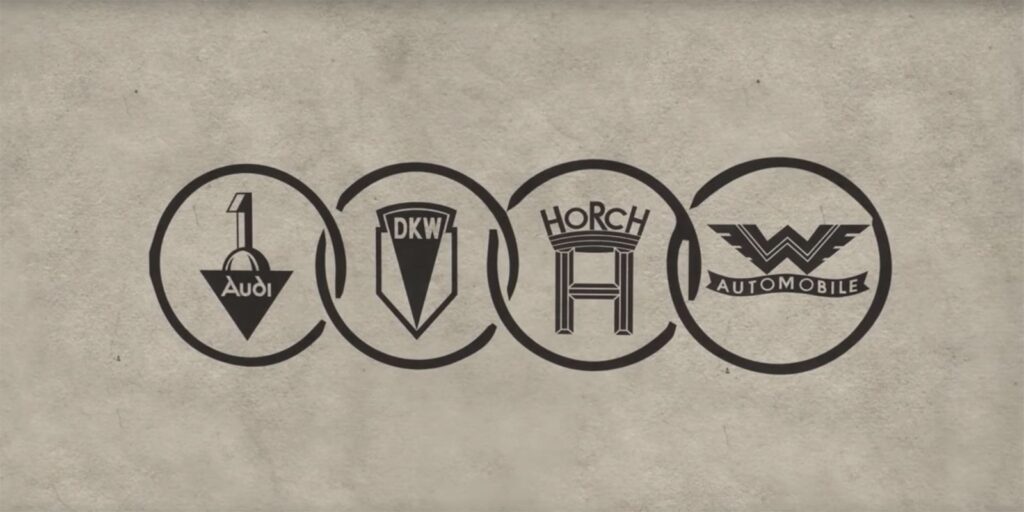The famous Audi logo, adorned with its four interlocked rings, has a captivating history that delves into the roots of the automotive industry. These rings are more than just a symbol; they represent the amalgamation of four distinct automakers that united their strengths in 1932 to create the entity known as the Auto Union.

- Horch: A Sound Beginning The story commences with the establishment of Horch in 1899, founded by the visionary German engineer, August Horch. Interestingly, the name “Horch” phonetically resembles the German word for “listen.”
- Audi: Listening in Latin Following his endeavors with Horch, Mr. Horch embarked on a new venture, aptly named Audi, which derives its name from the Latin word for “listen.” This linguistic connection forms the bridge between the distinctive rings found in both logos.
- Wanderer and DKW: Joining the Symphony The union didn’t stop with Horch and Audi; it also encompassed two more companies. Wanderer, established in 1911, and DKW, originally specializing in steam engines before venturing into automobile manufacturing in 1928, added their unique notes to this symphony.
- From Auto Union to Audi: A Complex Transition The transformation from Auto Union to Audi was a multifaceted journey. Following World War II, Auto Union diversified its production to encompass a wide range of vehicles, from cars to motorcycles and vans. However, the mid-1950s brought financial and labor challenges.
- Daimler-Benz and Volkswagen: The Changing Baton In 1958, Daimler-Benz took the reins of Auto Union, but the company’s financial struggles persisted. Eventually, in 1964, Volkswagen acquired Auto Union.
- The Emergence of Audi Under Volkswagen’s ownership, Auto Union transitioned, and cars began to bear the Audi nameplate. In 1969, the company expanded its portfolio by acquiring another automaker, NSU, leading to the full name Audi NSU Auto Union AG. Over time, this somewhat cumbersome title was simplified to Audi AG in 1985.
The story of the four rings symbolizes not only Audi's rich history but also the harmonious collaboration of four pioneering automotive manufacturers. It prompts us to ponder how the automotive landscape might have evolved if a different brand had taken the lead instead of Audi.